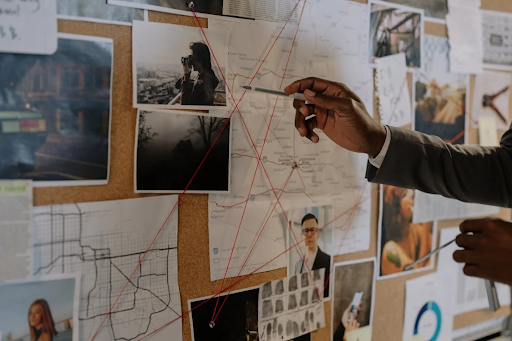Blogs
What Is Suspense in a Story? Writing That Keeps Readers Hooked

Few things are more satisfying for a reader than being completely gripped by a story—turning page after page, desperate to know what happens next. That irresistible pull is the power of suspense. Suspense is what keeps us awake at night finishing a novel, what makes a thriller thrilling, and what turns even a simple scene into something unforgettable.
But what exactly is suspense in literature, and how do writers create it?
Defining Suspense
Suspense is the emotional tension a reader feels when anticipating what will happen next. It’s that gnawing uncertainty—when you’re sure something is about to happen, but you don’t know what, when, or how.
Unlike surprise, which is sudden and fleeting, suspense lingers. It builds slowly, sometimes over chapters or even entire novels, keeping readers hooked by fueling their curiosity and anxiety.
Why Suspense Matters in Storytelling
Suspense matters because it taps into one of our most powerful human instincts: the need to know. When readers sense danger, conflict, or an unanswered question, they lean in. Suspense makes them invest emotionally in the characters and the outcome.
For writers, suspense is more than just entertainment—it’s a way to ensure readers stay engaged from the first page to the last.
The Core Ingredients of Suspense
Suspense doesn’t happen by accident. Authors build it using a blend of craft and psychology. Here are some of the key elements:
1. Uncertainty
Readers must feel unsure about the outcome. Will the hero escape? Will the secret be revealed? That doubt drives the tension.
2. High Stakes
The consequences of failure must matter. If nothing is at risk, readers won’t care. Suspense thrives when characters face danger, betrayal, or moral dilemmas.
3. Time Pressure
A ticking clock amplifies tension. Whether it’s a bomb about to explode or a deadline before a secret is exposed, time limits heighten suspense.
4. Foreshadowing
Hints of what might come keep readers alert. A mysterious phone call, a shadow in the hallway, or a character’s nervous glance can signal that something big is about to happen.
5. Reader Knowledge vs. Character Knowledge
Sometimes the reader knows more than the character (dramatic irony). Watching a character walk into danger we can see coming is one of the most powerful tools for suspense.
6. Examples of Suspense in Literature
Suspense has fueled some of the greatest novels of all time:
- Agatha Christie’s And Then There Were None – Readers know a killer is among the guests, but not who. The tension builds with every death.
- John le Carré’s Tinker, Tailor, Soldier, Spy – The slow unraveling of a mole inside British intelligence keeps readers questioning loyalties until the final reveal.
- Stephen King’s Misery – A trapped writer and his unstable captor create claustrophobic suspense from the very first scene.
- Gillian Flynn’s Gone Girl – Psychological twists and shifting perspectives keep readers guessing what’s true and what isn’t.
These stories prove that suspense isn’t limited to car chases or shootouts. It can come from silence, secrets, and even everyday conversations.
Suspense in Political Fiction and Thrillers
In political fiction, suspense takes on a unique flavor. Instead of just personal stakes, the fate of governments, nations, or entire populations may hang in the balance. Readers feel the pressure of decisions that could start wars, topple regimes, or uncover massive conspiracies.
For example:
- A senator hides a scandal that could change an election.
- A spy races to stop a terrorist plot before it reaches American soil.
- An investigative journalist risks everything to expose corruption.
Suspense in this genre thrives on the intersection of secrecy, power, and truth—themes that are both timeless and relevant to modern readers.
How Suspense Affects Readers
Suspense isn’t just an intellectual exercise—it’s physical. Readers may feel:
- A racing heart.
- Sweaty palms.
- The urge to read “just one more chapter.”
Psychologists call this the “Zeigarnik effect”—our minds dislike unfinished business. When a story leaves us hanging, we crave closure. Suspense leverages this instinct, keeping us emotionally tethered until the resolution arrives.
Techniques Writers Use to Create Suspense
Great authors employ a toolbox of techniques to maintain suspense.
- Cliffhangers – Ending chapters mid-crisis forces readers to continue.
- Red Herrings – Misleading clues keep readers second-guessing.
- Multiple Points of View – Switching perspectives can reveal new dangers that characters don’t see.
- Short, Snappy Chapters – Quick pacing mirrors the intensity of the story.
- Delayed Revelations – Holding back information makes the final reveal more powerful.
By combining these techniques, writers control the rhythm of tension, tightening and releasing it like a heartbeat.
Writing Suspense Without Action
Suspense doesn’t always require explosions or violence. Sometimes the most gripping tension comes from quiet, everyday moments. A character waiting for medical test results. A knock at the door in the middle of the night. A political leader hesitating before signing a treaty.
These moments prove that suspense is about emotional stakes, not just physical danger.
Lessons for Readers and Writers
For readers, recognizing suspense deepens appreciation for a story. You begin to notice how carefully an author manipulates your emotions, guiding you toward shock, relief, or dread.
For writers, mastering suspense is essential. Whether crafting thrillers, romances, or political dramas, suspense keeps stories alive. It’s the glue that binds readers to characters, making every twist hit harder.
The Art of Suspense
Suspense is the lifeblood of compelling storytelling. It transforms ordinary narratives into unforgettable experiences, ensuring readers don’t just consume a story—they live it.
Whether it’s a spy novel racing against time, a political thriller unraveling corruption, or a domestic drama filled with secrets, suspense makes us care deeply about the outcome.
In the end, suspense reminds us why we read: not just to know what happens, but to feel the thrill of not knowing—until the very last page.